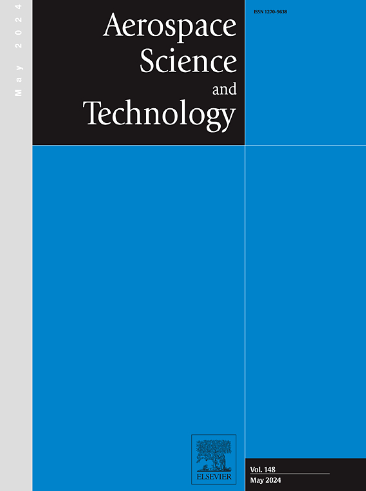添加式制造的剪切三轴火箭喷射器的混合和燃烧特性
IF 5
1区 工程技术
Q1 ENGINEERING, AEROSPACE
引用次数: 0
摘要
利用增材制造技术实现了一种整体式三同轴推进剂喷射方案,以增强液体推进剂火箭系统中甲烷与氧气的混合。利用激光吸收层析成像和化学发光成像技术,在 1-69 巴范围内对三轴向设计的混合和燃烧特性进行了实验评估,并与传统制造的双轴设计进行了比较。通过激光吸收光谱方法生成了温度和一氧化碳分子分数的定量二维图像,而 OH* 化学发光则为定义火焰长度和喷射器间距的燃烧热释放提供了近似度量。在压力和氧化剂与燃料比率相似的情况下,三轴向喷射器设计可增强混合和燃烧过程,减少特征混合长度尺度,并实现相对于更传统的双轴设计的更佳燃烧性能。尽管混合得到了加强,但三同轴设计在减少火焰与喷射器面的距离方面表现得更为有限,这表明可以控制喷射器面增加的热通量。三轴向喷射器凸显了利用增材制造提高性能和简化液体推进剂火箭发动机制造的潜力。本文章由计算机程序翻译,如有差异,请以英文原文为准。
Additively-manufactured shear tri-coaxial rocket injector mixing and combustion characteristics
A monolithic tri-coaxial propellant injection scheme for enhanced mixing of methane-oxygen in liquid-propellant rocket systems is enabled by additive manufacturing. Mixing and combustion characteristics of the tri-coaxial design are assessed experimentally from 1–69 bar using laser absorption tomography and chemiluminescence imaging, and are compared to a traditionally-manufactured bi-coaxial design. Quantitative two-dimensional images of temperature and carbon monoxide mole fraction are generated from the laser absorption spectroscopy methods, while OH* chemiluminescence provides an approximate metric for combustion heat release defining flame length and injector standoff distance. At similar pressures and oxidizer-to-fuel ratios, the tri-coaxial injector design is shown to enhance mixing and combustion progress, reducing characteristic mixing length scales and achieving improved combustion performance relative to more conventional bi-coaxial designs. Despite enhanced mixing, the tri-coaxial design exhibits more limited reduction in flame standoff distance from the injector face, suggesting that increased heat flux to the injector face can be managed. The tri-coaxial injector highlights the potential to leverage additive manufacturing to enhance performance and simplify the fabrication of liquid-propellant rocket engines.
求助全文
通过发布文献求助,成功后即可免费获取论文全文。
去求助
来源期刊

Aerospace Science and Technology
工程技术-工程:宇航
CiteScore
10.30
自引率
28.60%
发文量
654
审稿时长
54 days
期刊介绍:
Aerospace Science and Technology publishes articles of outstanding scientific quality. Each article is reviewed by two referees. The journal welcomes papers from a wide range of countries. This journal publishes original papers, review articles and short communications related to all fields of aerospace research, fundamental and applied, potential applications of which are clearly related to:
• The design and the manufacture of aircraft, helicopters, missiles, launchers and satellites
• The control of their environment
• The study of various systems they are involved in, as supports or as targets.
Authors are invited to submit papers on new advances in the following topics to aerospace applications:
• Fluid dynamics
• Energetics and propulsion
• Materials and structures
• Flight mechanics
• Navigation, guidance and control
• Acoustics
• Optics
• Electromagnetism and radar
• Signal and image processing
• Information processing
• Data fusion
• Decision aid
• Human behaviour
• Robotics and intelligent systems
• Complex system engineering.
Etc.
 求助内容:
求助内容: 应助结果提醒方式:
应助结果提醒方式:


